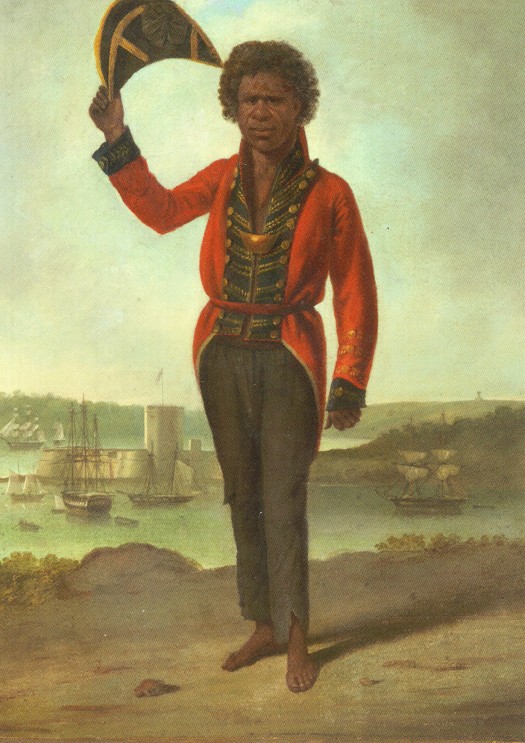I can hear many indigenous and non-indigenous voices in the present reports of the Ross River regional dialogue – but i cannot hear the singing voices of senior indigenous lawmen from the Tennant Creek and Barkly region of the Northern Territory.
In 1901, when the new Commonwealth of Australia came into existence with the new Australian Constitution, the renown anthropologists Spencer and Gillen spent some months at the Tennant Creek Telegraph Station being mentored – by senior Warumungu lawmen – in the laws and cultures of First Peoples.
The senior Warumungu lawmen undoubtedly saw the anthropologists as some kind of representative of Anglo-Australia authorities. Warumungu and related people were reeling from the savage invasion by cattle and cattle-men into their lives and living country.
The senior men clearly wanted to instill some degree of understanding about country into the minds of those authorities associated with the invasion of cattle and cattle-men. They reached out and made known much of esoteric knowledge which makes up their life capital. This is usually carefully guarded.
But the extensive knowledge they shared with Spencer and Gillen did not find its way back into the lawmaking processes of the new Federal Government.
The anthropologists were not in Warumungu country to serve as a conduit to the Anglo-Australian authorities. Rather, they were there to document – for future men of science – the lives of Stone Age people before they disappeared – swept away by ‘progress’.
The singing voices of senior lawmen were not heard in the remote places (Canberra) where Anglo-Australia’s lawmen make their laws. Their voices are completely missing from the 1901 Australian Constitution and the large body of Anglo-Australian law which followed.
There was simply no connect between the efforts of the senior lawmen and the decision-making processes of the Anglo-Australian political system.
First Peoples were never remnants of an imaginary Stone Age. They are contemporary peoples who follow a Way of life which is different to that of Europe. The high culture – the systems of law which inform the lives of senior lawmen – is central to this other Way of life. Senior women, of course, play a complementary role as high cultural carriers. It is a both-and situation not an either/or one. I cannot speak on women’s matters.
This high culture has existential rights – it does not require recognition by non-indigenous Australians (or anyone else) to exist. Constitutional recognition would, however, make life better adjusted for all concerned.
TWO SYSTEMS OF LAW
The present campaign to make good the enormous shortcomings of the 1901 Constitution and to gain some form of recognition of this country’s First Peoples may presently suffer from exactly this same flaw – a lack of connect and real engagement between the two systems of law.
In 1990 I was fortunate enough to gain a Lionel Murphy Scholarship to spend a year considering how to improving dialogue between the two systems of law in this country. Those two systems are the original system of First Peoples law and the introduced system of law.
This came after I had had ten years of direct involvement in First Peoples Ways in the Northern Territory. Firstly, in the early 1980s, as Senior Anthropologist responsible for land claims with the Central Land Council based in Alice Springs. My main area of involvement was with Warumungu and Alyawarra people in the Tennant Creek/Barkly region to the north of Alice Springs.
Secondly, I spent the second half of the 1980s living in Tennant Creek and, for a while, working as a Community Development Officer with Julalikari Council. My role required me to meet weekly with the representatives of the numerous town camps and to assist with the meetings of the full Council.
I left the Northern Territory in 1989 and my family came to live in the Northern Suburbs of Wollongong, south of Sydney, in NSW. I spent a good part of the 1990s involved in local reconciliation groups, and supporting the Sandon Point Aboriginal Tent Embassy in their struggle for recognition.
Consequently, not only have I given a great deal of thought to how to consult indigenous people, I have also spent a good part of my life being directly involved with First Peoples at the grassroots level.
One of the key lessons I have learnt is that a successful consultation process – one that actually engages with First Peoples in the lives they actually lives – must be designed (from the outset) with an emphasis on process.
If you can get the process right then you can avoid a host of other problems further down the track. A proper process is not one which merely informs them of something which is going on a coming-ready-or-not basis.
A proper process is one which provides senior lawmen – properly constituted in their own right – with as much information as they require to consider the issues from their perspective. Then, those presenting the information, need to retire for the requisite time (days, weeks) so that senior men can discuss matters between themselves and determine if they can arrive at a consensus. Then, when the senior men are agreed (they will avoid a meeting if they are not) to reconvene and allow them to make a public statement of their agreed position.
I very much doubt that any real effort will be made, between now and the National Indigenous Referendum Convention at Uluru in late May, to actually engage with the senior lawmen in the Tennant Creek and Barkly region. It takes a concerted effort to do this.
I hope i am completely mistaken and urge the delegates who have been selected at the Ross River regional dialogue meeting to make every effort to provide an opportunity for the senior lawmen to speak in their own voices at the Constitutional convention at Uluru in May.
In my experience, no one else can do this for the senior lawmen.
Their empowered involvement is a crucially important ingredient for healing life in this country.


